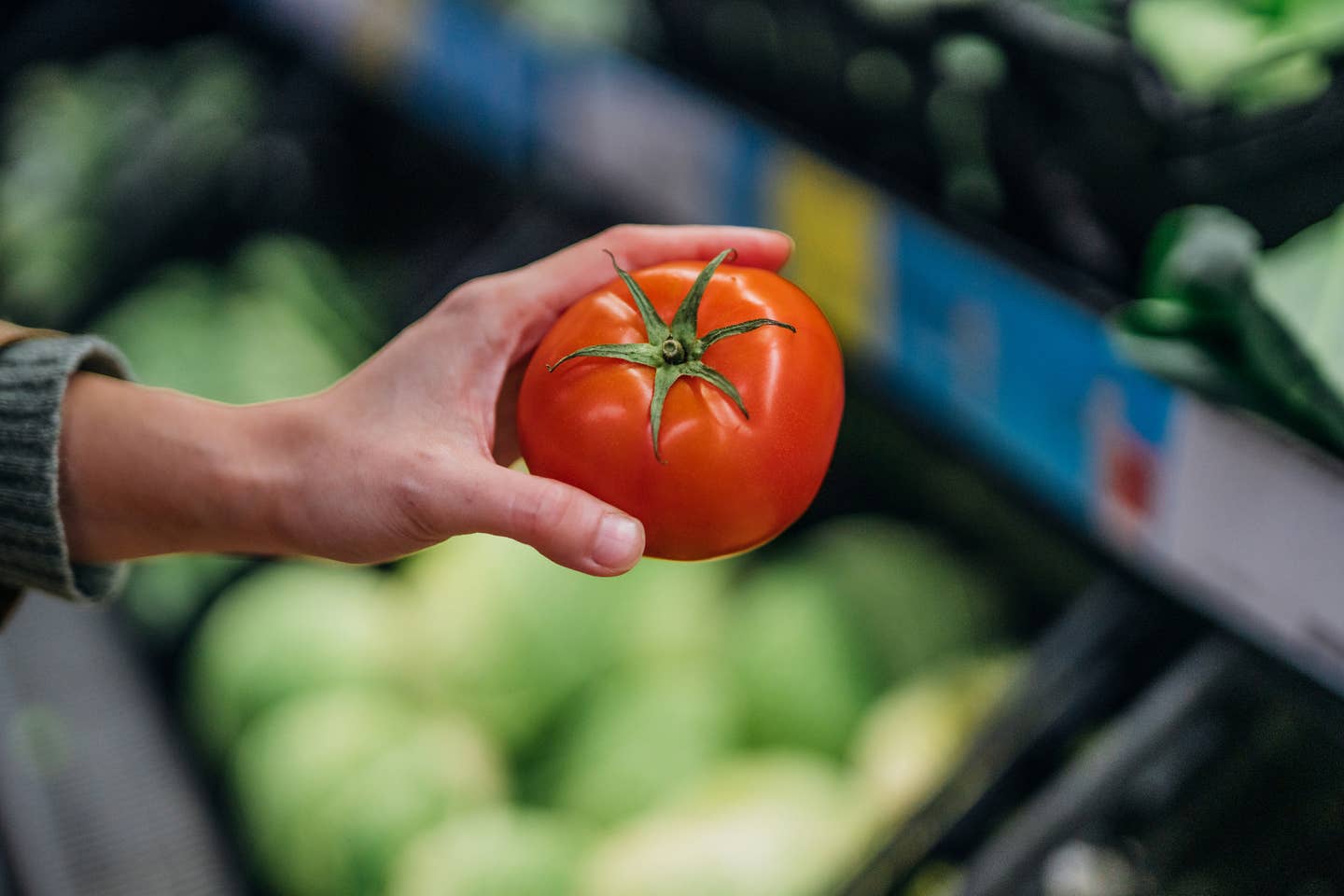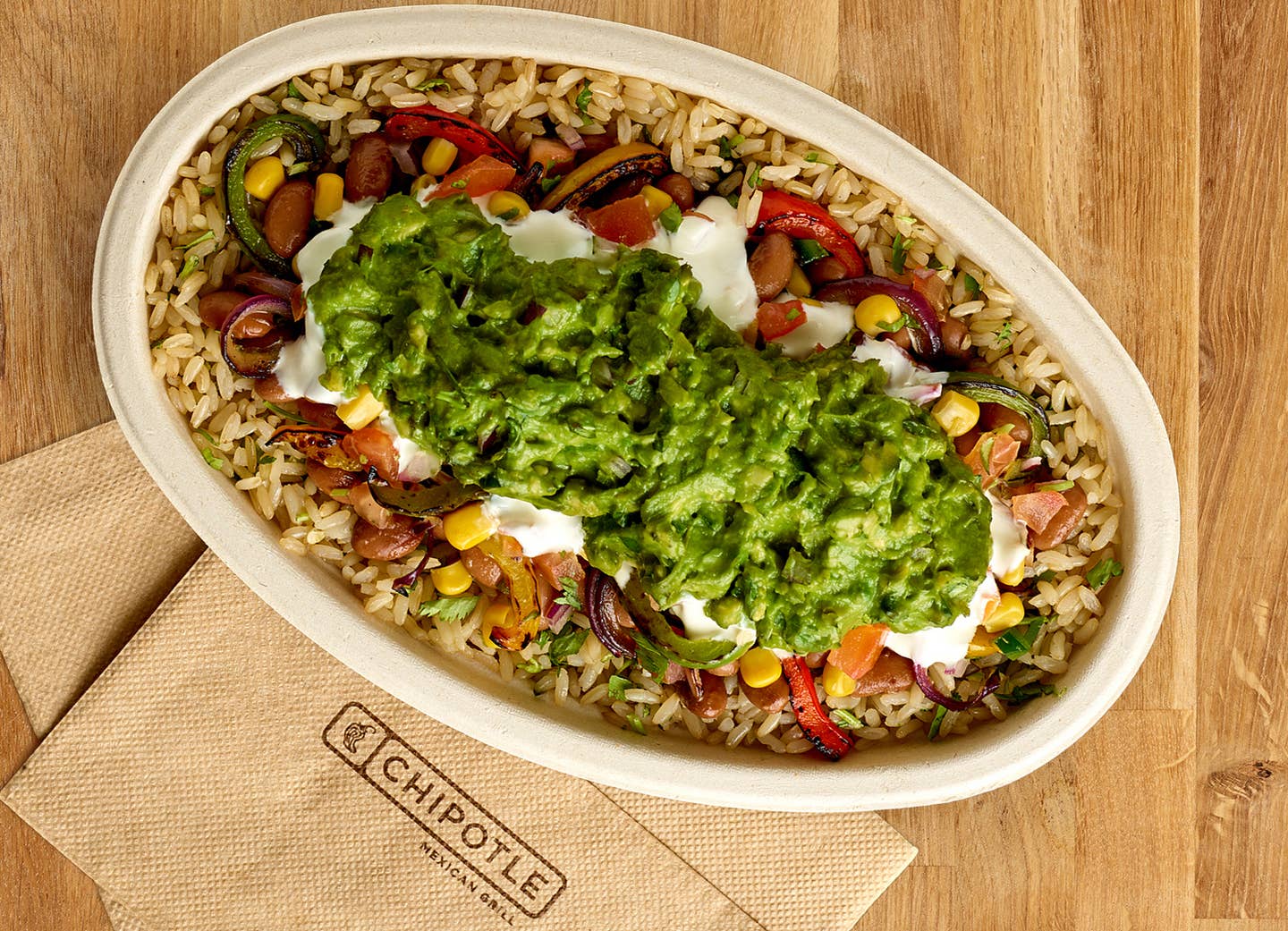
Scientists Are Engineering This Plant to Have as Much Vitamin D as Eggs
Products like Eat Just's JUST Egg and companies like Nestle have developed plant-based alternatives meant to replace the need for conventional chicken eggs by providing similar nutrition. But what about vegans and plant-based eaters who try to avoid processed foods? British scientists from the John Innes Centre began experimenting with the CRISPR gene-editing technology to close the nutrition gap for consumers who might lose out on Vitamin D3 when giving up animal products.
Cutting out eggs or fish from your diet could cut out a significant amount of Vitamin D3 – an essential nutrient typically received by sunlight or animal product. Now, researchers have edited the genetic code of tomatoes to maximize the Vitamin D3 levels in the fruit. These tomatoes will contain the equivalent level of the vitamin as two medium eggs or two ounces of tuna.
The British researchers released their findings in the scientific journal Nature Plants, which revealed that gene-editing technology could successfully close nutrition gaps between different diets.
The researcher chose the tomato to optimize with the CRISPR-Car9 technology because tomato plants hold the precursor provitamins necessary in their leaves. The tomato plants – producing provitamin D3 or 7-dehydrocholesterol (7-DHC) – made the tomato a viable candidate for the experiment. The CRISPR technology will optimize the tomatoes' ability to produce Vitamin D3, allowing plant-based dieters to easily consume Vitamin D3 without animal products.
“We’ve shown that you can biofortify tomatoes with provitamin D3 using gene editing, which means tomatoes could be developed as a plant-based, sustainable source of vitamin D3,” lead author and Professor Cathie Martin said in a statement.
Optimizing the Tomato’s Health Benefits
In some ways, Vitamin D3 is one of the most abundant vitamins, but communities located in areas with low sunlight can find themselves lacking this essential nutrient during substantial portions of the year. The British scientists – motivated by the small daytime hours of the Winter – aim to provide an easy solution to this nutrient deficit with regularly eaten produce.
"Forty percent of Europeans have vitamin D insufficiency and so do one billion people worldwide,” Martin continued. We are not only addressing a huge health problem but are helping producers, because tomato leaves which currently go to waste, could be used to make supplements from the gene-edited lines."
The gene-edited tomatoes will allow people to satisfy the global Vitamin D3 recommendations (approximately 400 international units (IU) to 800 IU, depending on age). The researchers also noted that allowing the plant to receive more sun exposure would result in higher levels of Vitamin D3. The researcher intends to provide consumers with the proper amount of this essential nutrient when they otherwise lose access to sunlight and intend to maintain a plant-based diet.
The researchers also ensured that the gene-edited tomato would face no barriers in its ability to produce the essential vitamin. With the CRISPR technology, the scientists turned off an enzyme (Sl7-DR2) that was discovered to prevent the accumulation of the provitamin D3 in the plant’s leaves.
The optimized tomato contains high levels of Vitamin D3 in the leaves as well, recorded at approximately 600 micrograms per gram of dry weight. Typically, tomato plant leaves are seen as waste, but with the newly optimized genetic code, the leaves could be used as ingredients to bolster Vitamin D3 for other products.
Providing Essential Nutrients to Plant-Baed Eaters
Most companies fortify foods with Vitamin D3 with animal products including lanolin – an ingredient found in sheep’s wool. This research provides a clear way to optimize crops so that plant-based consumers can receive the proper levels of certain vitamins. The research team also noted that it plans to experiment with other major crops including peppers, potatoes, and eggplant, which all have similar biochemical make-up to tomatoes.
The findings provide a solution to Vitamin D3 deficiencies, which previous research has linked to higher risks of dementia, cancer, and even more severe COVID-19 symptoms. The enhanced tomatoes mark an achievement of CRISPR and plant-based technology, aiming to ensure that all consumers have access to healthy, immune-boosting foods regardless of location.
“The COVID-19 pandemic has helped to highlight the issue of vitamin D insufficiency and its impact on our immune function and general health,” study author Dr. Jie Li said in a statement. “The provitamin D-enriched tomatoes we have produced offer a much-needed plant-based source of the sunshine vitamin. That is great news for people adopting a plant-rich, vegetarian, or vegan diet, and for the growing number of people worldwide suffering from the problem of vitamin D insufficiency.”
For more plant-based happenings, visit The Beet's News articles.
The 13 Best Foods to Boost Your Immune System to Fight Off COVID-19 Symptoms
Here are the best foods to eat on repeat, to boost immunity and fight inflammation. And stay off the red meat.
1. Citrus for Your Cells and Healing
Your body does not produce vitamin C, which means you need to get it daily to have enough to create healthy collagen (the building blocks for your skin and healing).The recommended daily amount to shoot for is 65 to 90 milligrams a day, which is the equivalent of one small glass of orange juice or eating a whole grapefruit. Almost all citrus fruits are high in vitamin C. With such a variety to choose from, it's easy to get your fill.
2. Red Peppers to Pump Up Skin and Boost Immunity with Twice the Amount of Vitamin C as an Orange Has
Want even more vitamin C, add red bell peppers to your salad or pasta sauce. One medium-sized red bell pepper contains 152 milligrams of vitamin C, or enough to fulfill your RDA. Peppers are also a great source of beta carotene, a precursor of vitamin A (retinol). How much beta carotene do you need a day: You should try to get 75 to 180 micrograms a day which is the equivalent of one medium bell pepper a day. But a red pepper has more than two and a half times your RDA for vitamin C so eat them all winter long.
3. Broccoli, But Eat It Nearly Raw, to get the Most Nutrients Out of It!
Broccoli may be the most super of superfoods on the planet. It's rich in vitamins A and C as well as E. The phytochemicals in it are great for arming and strengthening your immune system.How much lutein should you eat in a day: There is no RDA for lutein, but experts say get at least 6 milligrams.
4. Garlic, Eaten By the Clove
Garlic isn't just a great flavor-enhancer, it's essential for your health. Garlic’s immune-boosting properties are tied to its sulfur-containing compounds, such as allicin. Allicin is thought to improve your immune cells' ability to fight off colds and flu, and viruses of all kinds. (Smelling more garlic on the subway? It could be smart coronavirus management.) Garlic also has anti-microbial and anti-viral properties thought to fight off infections. How much should you eat in a day: The optimal amount of garlic to eat is more than most of us can fathom: Two to three cloves a day. While that may not be doable, realistically, some people take garlic supplements to get 300-mg dried garlic in a powdered tablet.
5. Ginger is a Power Player for Immunity and Digestion
Ginger is another ingredient that has super properties when it comes to fighting off illness. It has been shown to decrease inflammation, which can help if you get swollen glands or a sore throat or any inflammatory ailment. Gingerol, the main bioactive compound in ginger, is a relative of capsaicin, and is responsible for much of its medicinal properties. It has powerful anti-inflammatory and antioxidant benefits.How much should you eat a day: Most recommendations land on 3–4 grams of ginger extract a day, or up to four cups of ginger tea, but no more than 1 gram a day if you are pregnant. Some studies have linked high dosages to an increased risk of miscarriage.
6. Spinach, Wilted, Not Steamed (Also Kale and Dark Leafy Greens of All Kinds)
Spinach is not only packed with vitamin C but also antioxidants and beta carotene, both of which give your immune system the healthy boost it needs to fight off invaders. Don't overcook your spinach, since the more it's cooked the less active the antioxidants will be. If you eat it raw or lightly steamed you'll keep more of the nutrients intact.How much should you eat a day: Aim for 1 cup fresh spinach or 1/2 cup cooked per day, but this is the right moment to try the raw or slightly wilted approach. Order warm or wilted spinach salad when you go out, or make it yourself with olive oil, pine nuts, and vegan parm.
7. Almonds for the Win, Pop Them Like Candy
Vitamin E in almonds will help ward off colds and flu and is key to your immune system humming along. It’s a fat-soluble molecule, meaning it requires the presence of fat to be absorbed, so nuts are the perfect package for E to make it into your system.How much should you eat in a day: A half-cup serving, or 46 whole, shelled almonds, provides almost 100 percent of your RDA of vitamin E. Almonds are great for you but they don't come with a "free" pass, since 1/4 cup is a serving and has 162 calories, so double that for your RDA and you're eating about 325 calories. Throw them into smoothies instead.
8. Turmeric to Fight Inflammation, Put it In Your Tea or Smoothie
This highly pigmented spice is known for its anti-inflammatory qualities. How it helps immunity? It decreases exercise-induced muscle damage. Tumeric bolsters the immune system by stimulating antibody formation and people with auto-immune diseases are told by their doctors to take 500 mg of curcumin daily to reduce inflammation and stave off soreness.How much should you eat in a day: Try adding extra Tumeric to your diet during periods of stress or during flu season. Or take 500-2,000 mg of curcumin to help fight inflammation and power up your immune system.
9. Green Tea by the Gallon, Skip the Coffee and Sip this Instead
Green tea has high levels of EGCG, (epigallocatechin gallate) a hard-working antioxidant that is known to boost immune function. Green tea is steamed so the EGCG is still active when you drink it.Green tea also contains L-theanine, an anti-oxidant which appears to help in the production of T-cells in your body, the killer L-theanine may aid in the production of germ-fighting compounds in your T-cells.How much green tea should you drink in a day: The optimal amount is three to five cups in a day, but most people won't get to that level. Any amount is better than nothing. Swap out a usual beverage daily for green tea could improve your health.
10. Papaya, The Tropical Healer to Keep You Vacation-Healthy All Year Round
Papaya delivers over twice your recommended daily amount of vitamin C in one fruit. It also contains an enzyme called papain that has anti-inflammatory effects -- and inflammation is one factor in most illnesses, so avoiding it can help your body fight off bacterial infections like sinusitis.Papayas contain potassium, vitamin B, and folate, which is a powerful cell rebuilder. Exactly how folic acid works to build immunity is linked to its role in protein synthesis, and researchers think that any mechanism in which cells proliferate can be affected (which is why it's critical for pregnant women). People who are folate-deficient have compromised immune systems.How much folate should you eat a day: Whether you are pregnant or not, folate (vitamin B9) is a great vitamin to keep your cells healthy and strong. The recommendation is 400 micrograms a day, or get it from legumes, spinach, papayas, and avocados.
11. Kiwis, a Vitamin Powerhouse
Kiwis are full of folate, vitamin K, vitamin C, and potassium. These vitamins in combination work in the body to build healthy cells, fight infection and keep your immune system humming along. Vitamin K deficiency is rare but when people don't have enough they suffer from weak bones and compromised immune systems. The inflammation system in the body is also dependent on vitamin K, especially your killer T cells that mobilize and fight cancer and other diseases.How much should you eat in a day: Vitamin K is one of the unsung heroes of the body. Women should get 90 micrograms a day, and men should have 120 micrograms.
12. Sunflower seeds to sprinkle on salads or eat by themselves
Sunflower seeds are especially healthy since they provide phosphorus, magnesium and vitamin B-6 as well as vitamin E. Your immune system needs vitamin E to function at full throttle. You can also get vitamin E from avocados and spinach and broccoli.How much should you eat in a day: Anywhere from 1 ounce (30 grams) per day to a healthy handful is considered healthy, but because they are high in sodium you might want to refrain from eating the entire bag. The raw seeds have 204 calories per quarter cup.
13. Miso, Soup or Paste to Add to Your Soups and Salad Dressings
The nutrients in miso -- which is a soybean paste that has been fermented with salt and a koji starter -- boosts immune system function by delivering healthy probiotics to the gut, making your microbiome healthier. How does Miso benefit your immune system? It is a "sirt" food, which are foods that contain high levels of ‘sirtuins’ or proteins that regulate cells and activate metabolism. A diet high in sirts is believed to lead to weight loss, increased wellness and longevity.How much should you eat in a day? Researchers believe that consuming one bowl of miso soup per day, as is the tradition in Japan, lowers the risks of breast cancer. Other than its high sodium content there is no reason to stay away from miso with all its varied health benefits. We say cheers to that.
More From The Beet






